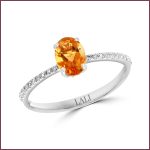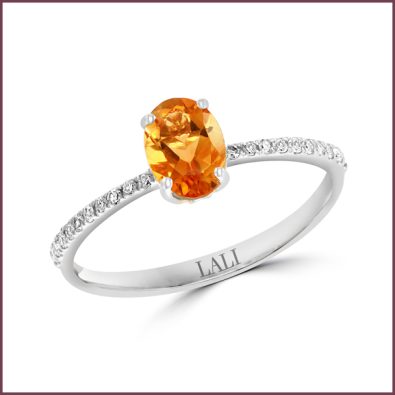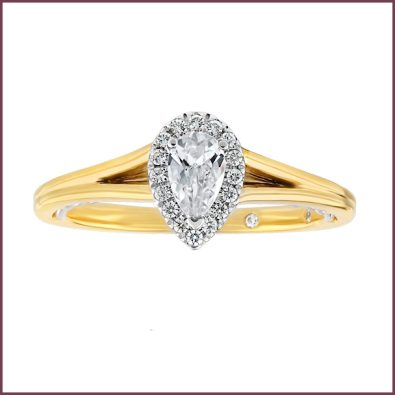Casting Smaller Nets
Casting smaller nets can help jewelers catch the fish others miss by casting too wide.
Niche marketing allows companies to carve an essential space for themselves in a broader market. Some businesses even create new niches by discovering and fulfilling customer needs that haven’t been addressed. Custom design service is a prime example.
Niche markets can narrowly carve subgroups based on interests, values, geographic fences, and micro demographics. Focusing on one niche or a few has the potential to supercharge marketing ROI. Serving a niche provides an opportunity to tailor inventory selection and more mindfully curate products.
It is vital that jewelers really get to know their audience, and understand their own brand identity to provide the right products and messaging.
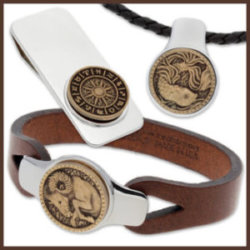 Finding Your Niche
Finding Your Niche
When looking at niche markets, jewelers should keep in mind the big picture. It’s not so much about finding the perfect niche, as it is clearly articulating your brand identity and being consistent with everything you do after that.
Examine who you are, why you are and what you stand for to determine the products and messaging that will work best for your brand.
Successful brands know their customers well and engage with them regularly, says Jonathan Goodman Cohen for the men’s jewelry manufacturer IBGoodman, Newport, Kentucky. He advises jewelers seek feedback from customers, both in-store and online, to understand what they’re interested in and what they value.
“Ask questions that determine how the products they wear play a meaningful role in their daily life,” he says. “Listen to honest feedback and observe customer preferences to develop effective merchandising and marketing for your business.”
Choose a niche that is accurate and reflects an authentic need. It’s really limitless the paths you can take from being the man cave in town and the source for alternative bridal to the birthday gift center and the destination for pearls.
Kathy Grenier, vice president of business development for Imperial Pearl, Providence, Rhode Island encourages jewelers to look at the competition to see what they’re doing, as they strategize their approach.
According to research by the luxury trends forecasting firm, The Futurist for The Plumb Club, multi-cultural, media savvy, socially empowered consumers are embracing a wide variety of products and services. Categories considered niche, like men’s jewelry, pearls and color stones are among the lauded growth segments and retail profit centers in fine jewelry for the 21st century.
Engaging Consumers
Cohen hails digital media (website and social) the most effective way to test products, gain data, talk trends, and share gift-ideas and stories underscores Cohen.
It provides ways to get the right message, to the right customer, at the right time. We can track consumers’ actions  and behaviors online, to accurately map their location at any given moment while having a clear understanding of their interests and activities through everyone’s social media footprint.
and behaviors online, to accurately map their location at any given moment while having a clear understanding of their interests and activities through everyone’s social media footprint.
Some of the tools that have emboldened marketing professionals in pursuing this idea are programmatic media buying, real-time marketing, data mining, geo-targeting, and retargeting. Each channel is best suited for specific products, group of consumers, and moments in time.
The online channel, according to Plumb Club research, offers valuable opportunities to create more variety and customization for the consumer. Online offers can provide different yet complementary products to a subset of customers looking for more customized alternatives than what can be found in store. And, it’s more cost effective to serve these customers through digital channels. In the long run, the digital channel would grow as the brand gains experience and customer behavior adapts and evolves.
Brands need to connect with consumers in how they live and spend their time, underscores the research. It’s important to create value for the consumer and make him/her reflect on broader themes as opposed to a myopic view of a specific product/sector. Dove is a great example of this concept. With its “Real Beauty” campaign, the brand shifted the focus from the product to a larger conversation of how beauty is perceived and the personal potential for beauty. By engaging the consumer with specific products, Dove was able to connect on a deeper and more emotional level.
The research also finds a shift from storytelling to story making, encouraging brands to stop talking to consumers, but rather with them in a two-way conversation. Moreover, the report advocates engagement that drives business.
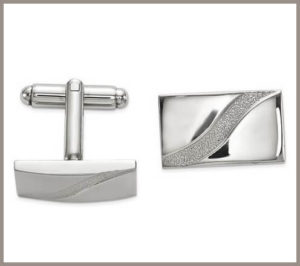 The Plumb Club Pavilion at JCK Las Vegas this year offered many new ideas for jewelers to consider in its retail innovation center. Among the latest technology to help retailers engage and persuade are augmented reality applications, like virtual jewelry try on; as well as kinetic retail display technology, allowing users to hover a digital device over a particular item to get product details; and GeoFencing that creates virtual boundaries around a business to communicate with customers through smart phones.
The Plumb Club Pavilion at JCK Las Vegas this year offered many new ideas for jewelers to consider in its retail innovation center. Among the latest technology to help retailers engage and persuade are augmented reality applications, like virtual jewelry try on; as well as kinetic retail display technology, allowing users to hover a digital device over a particular item to get product details; and GeoFencing that creates virtual boundaries around a business to communicate with customers through smart phones.
Cora Lee Colaizzi, marketing director and senior merchandiser for Quality Gold in Fairfield, Ohio described the pavilion this year as “exciting, interactive and engaging – like a think tank”! She says buyers are asking for this kind of assistance, and she applauds The Plumb Club’s leadership as an organization to commission research that can be used to better serve the industry.
